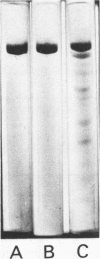Abstract
A rapid, simplified method for production and purification of tetanus toxin from bacterial extracts was described. The extracts were prepared by stirring young cells (ca. 45-h culture) of Clostridium tetani in 1 M NaCl-0.1 M sodium citrate, pH 7.5, overnight at 0 to 4 degrees C. The toxin was purified by a combination of (i) ammonium sulfate fractionation (0 to 40% saturation), (ii) ultracentrifugation for removal of particulate materials, and (iii) gel filtration by high-pressure liquid chromatography on a TSK G3000 SW-type column. This method required 6 days as follows: (i) overnight incubation of the seed culture, (ii) 2 days for growing the bacteria for toxin production, (iii) overnight extraction of the toxin from the bacteria, (iv) overnight precipitation of the toxin with ammonium sulfate, (v) 2 h for ultracentrifugation of the ammonium sulfate concentrate of the bacterial extract, and (vi) 1 h for high-pressure liquid chromatography. The minimum lethal dose of the purified toxin preparations for mice was 1.4 X 10(7) to 1.5 X 10(7) per mg of protein and they showed 360 to 390 Lf (flocculating activity) per mg protein and a 280/260 nm absorbance ratio of 2.0 to 2.1. The final recovery of the toxin from bacterial extracts was 90 to 93%. The purified preparations gave a single band of toxin protein with a molecular weight of 150,000 +/- 5,000 on sodium dodecyl sulfate-polyacrylamide gel electrophoresis. On crossed immunoelectrophoresis, the purified toxin preparations gave a single precipitation arc against anti-crude toxin serum.
Full text
PDF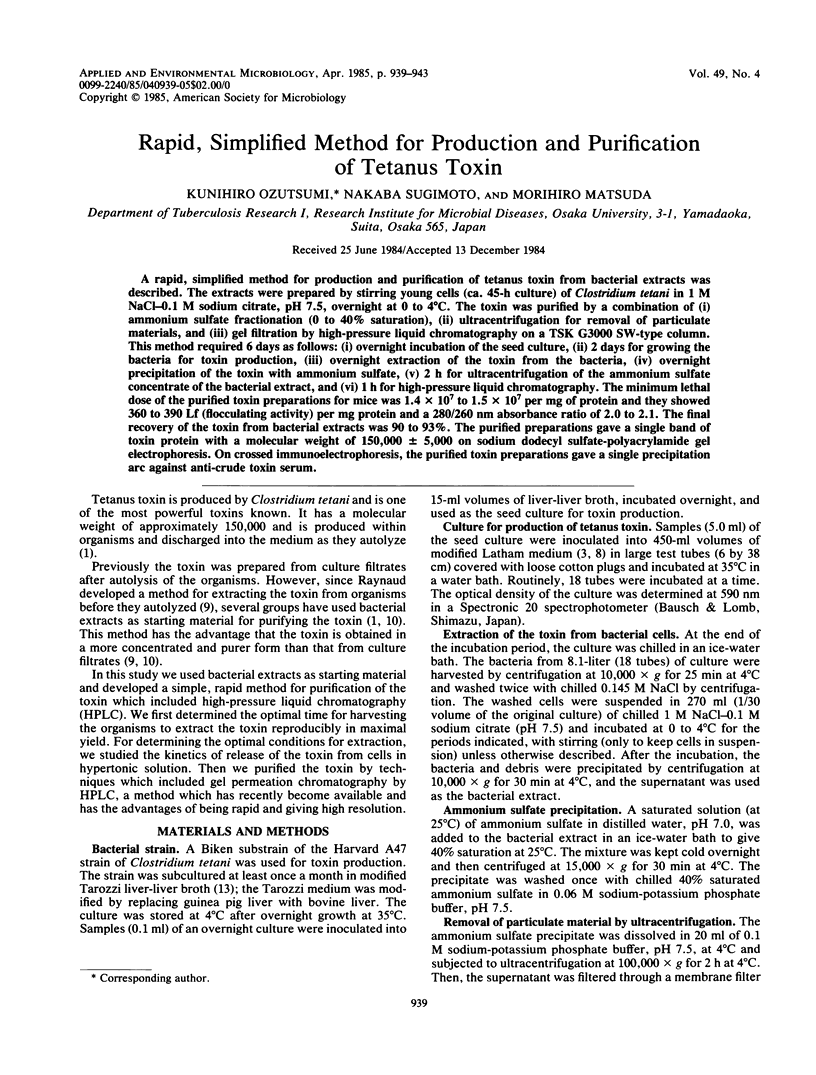
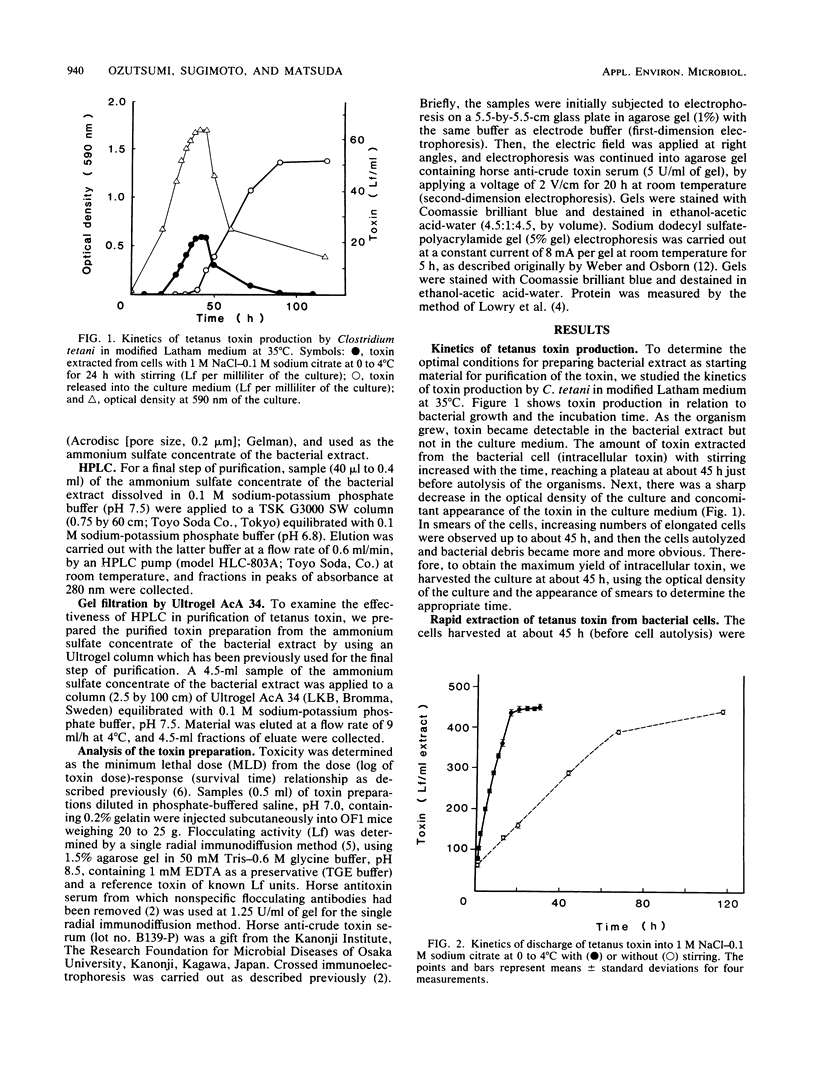
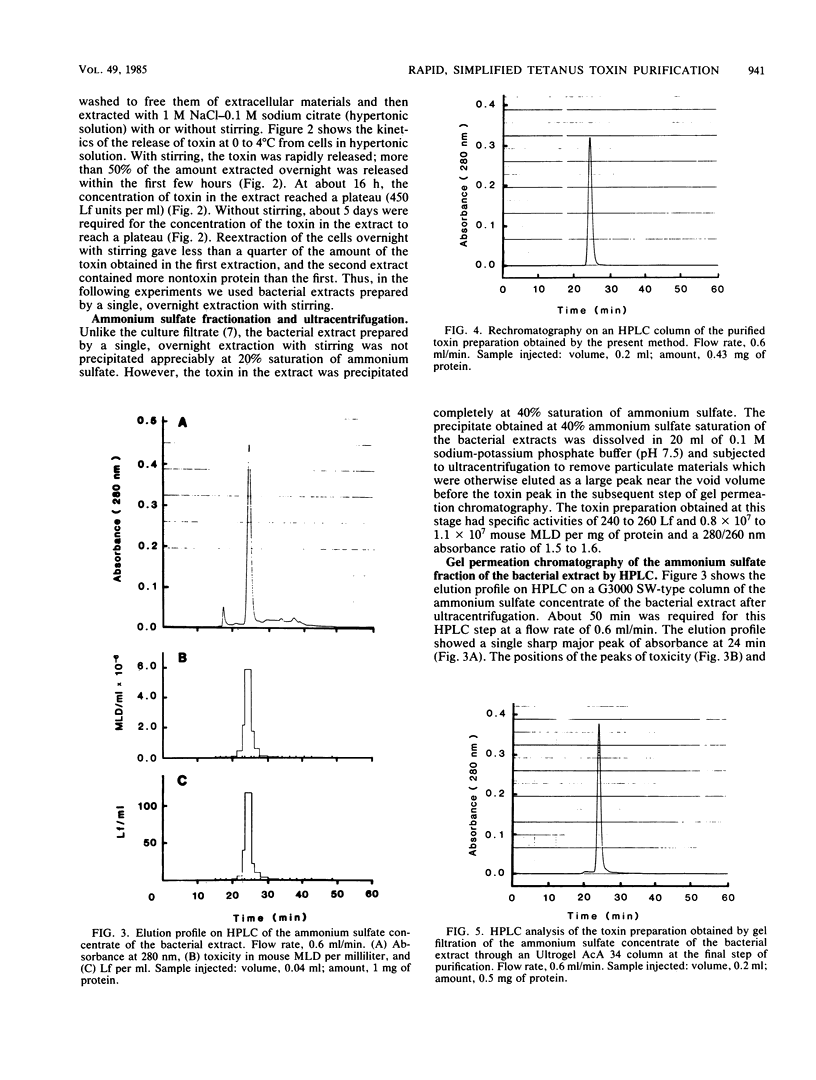
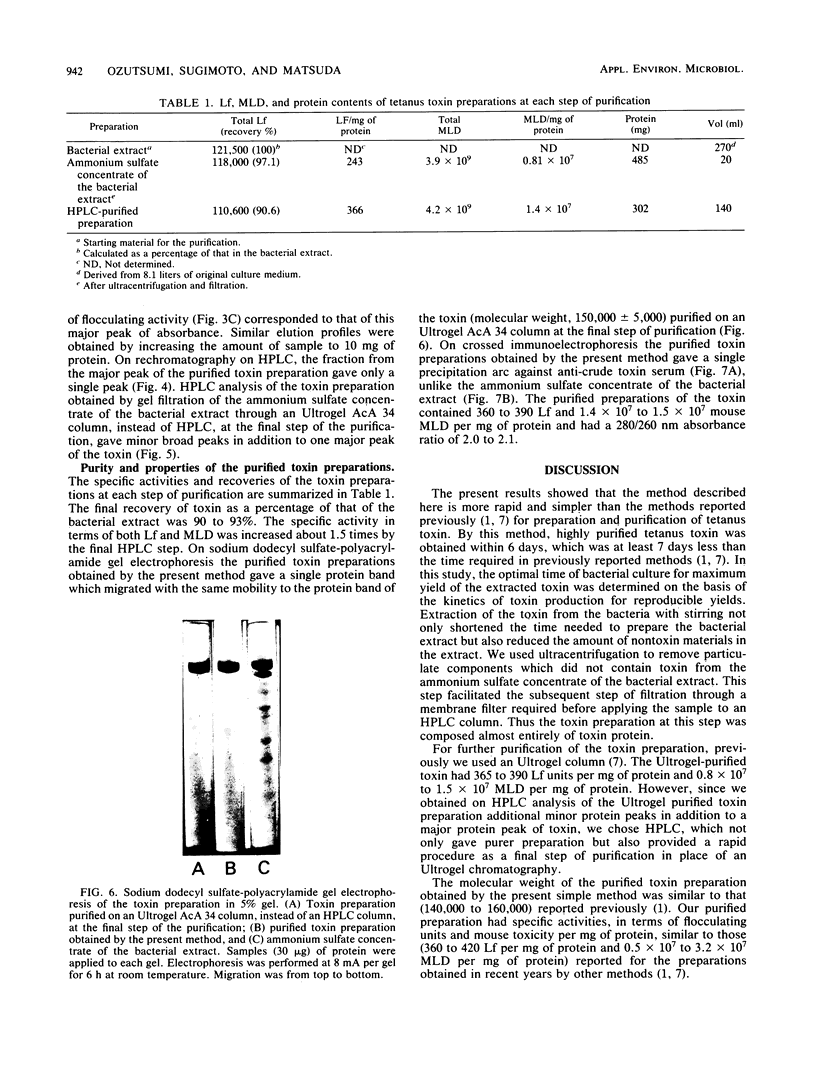
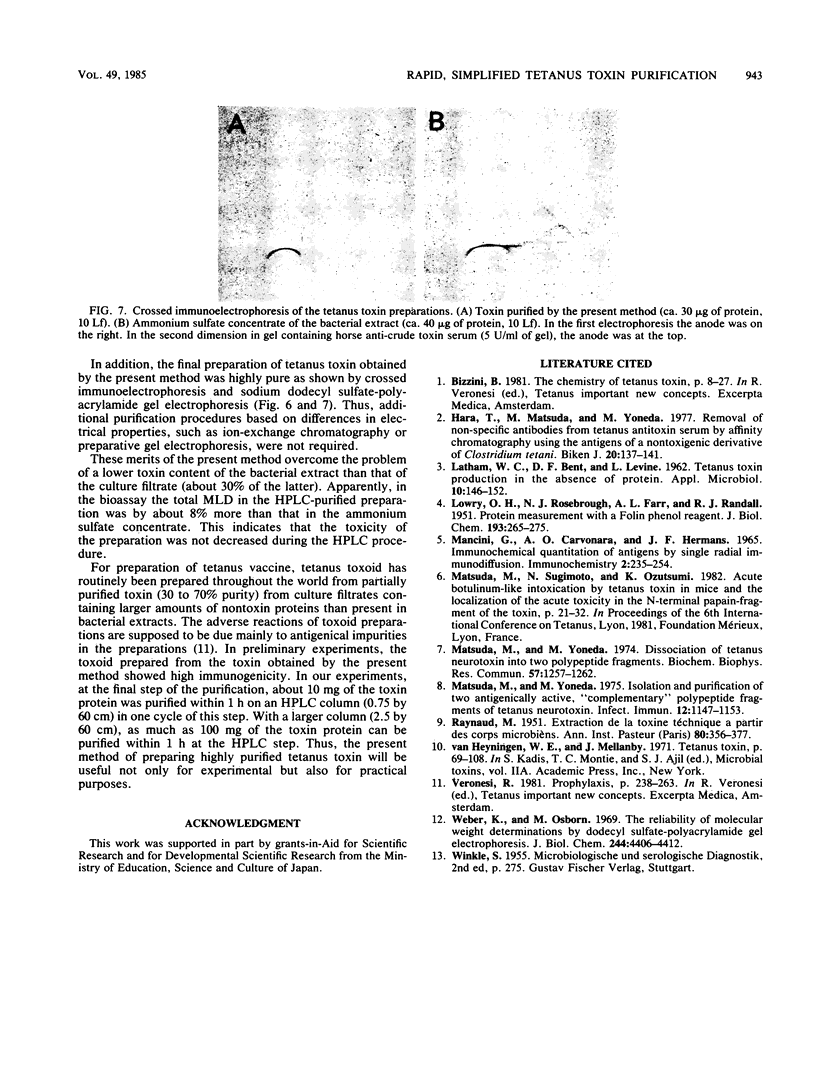
Images in this article
Selected References
These references are in PubMed. This may not be the complete list of references from this article.
- Hara T., Matsuda M., Yoneda M. Removal of non-specific antibodies from tetanus antitoxin serum by affinity chromatography using the antigens of a nontoxigenic derivative of Clostridium tetani. Biken J. 1977 Dec;20(3-4):137–141. [PubMed] [Google Scholar]
- LATHAM W. C., BENT D. F., LEVINE L. Tetanus toxin production in the absence of protein. Appl Microbiol. 1962 Mar;10:146–152. doi: 10.1128/am.10.2.146-152.1962. [DOI] [PMC free article] [PubMed] [Google Scholar]
- LOWRY O. H., ROSEBROUGH N. J., FARR A. L., RANDALL R. J. Protein measurement with the Folin phenol reagent. J Biol Chem. 1951 Nov;193(1):265–275. [PubMed] [Google Scholar]
- Mancini G., Carbonara A. O., Heremans J. F. Immunochemical quantitation of antigens by single radial immunodiffusion. Immunochemistry. 1965 Sep;2(3):235–254. doi: 10.1016/0019-2791(65)90004-2. [DOI] [PubMed] [Google Scholar]
- Matsuda M., Yoneda M. Dissociation of tetanus neurotoxin into two polypeptide fragments. Biochem Biophys Res Commun. 1974 Apr 23;57(4):1257–1262. doi: 10.1016/0006-291x(74)90831-6. [DOI] [PubMed] [Google Scholar]
- Matsuda M., Yoneda M. Isolation and purification of two antigenically active, "complimentary" polypeptide fragments of tetanus neurotoxin. Infect Immun. 1975 Nov;12(5):1147–1153. doi: 10.1128/iai.12.5.1147-1153.1975. [DOI] [PMC free article] [PubMed] [Google Scholar]
- RAYNAUD M. Extraction de la toxine tétanique a partir des corps microbiens. Ann Inst Pasteur (Paris) 1951 Apr;80(4):356–377. [PubMed] [Google Scholar]
- Weber K., Osborn M. The reliability of molecular weight determinations by dodecyl sulfate-polyacrylamide gel electrophoresis. J Biol Chem. 1969 Aug 25;244(16):4406–4412. [PubMed] [Google Scholar]



